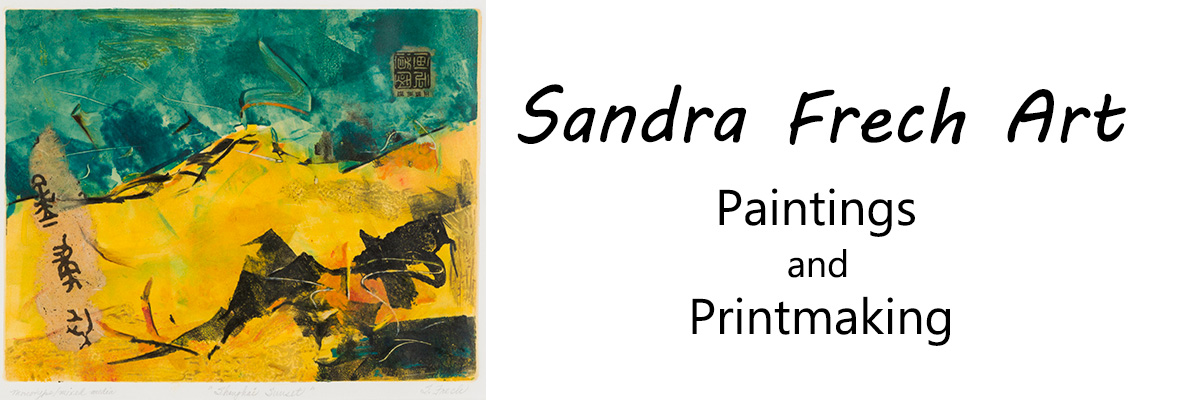Monotype vs. Monoprint
Monotype
Although monotypes and monoprints involve distinctly different processes, the two terms are often used erroneously as synonyms, or are mistakenly used for each other.
A “monotype” is a single print pulled from a Plexiglas, glass, or metal plate on which ink or paint has been applied. The image can be transferred to paper by hand rubbing or with a press.
A “monotype” remains a one of a kind print because it contains no repeatable matrix in the image from which a perfect, identical second impression can be made.
The addition of oil pastel, crayons, waterbased pencil, collage and / or chine colle enhances the “painterly” effect. Each print is unique; each is a “mono-type”.
Monoprint
A “monoprint” begins with a repeatable matrix in the image (such as an etched plate), which could, if desired, be editioned to produce a series of like impressions.
What gives the monoprint its singularity is the process of subsequent hand coloring or doctoring to make it uniquely different or a one of a kind print.
A series of “monoprints”, all derived from the same plate but then individually hand manipulated, is often called a “unique edition” and is signed and numbered accordingly.
